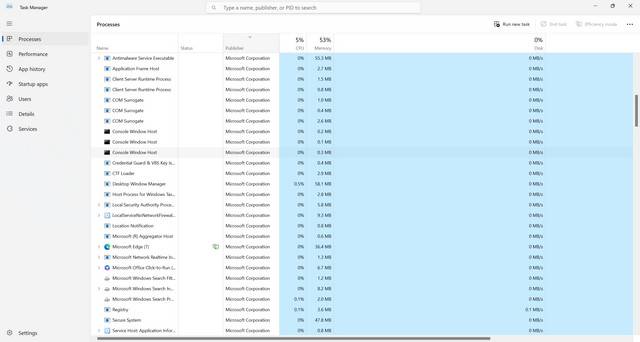When it comes to computer processes and files, it’s important to understand what they are and whether they pose any risks to your system. One such file that may raise questions is aspnet_state.exe. In this article, we will delve into the details of aspnet_state.exe, discuss whether you should remove it, and determine if it is malware or not.

What is aspnet_state.exe?
aspnet_state.exe is an executable file that is associated with Microsoft ASP.NET State Service. ASP.NET is a web application framework developed by Microsoft, and the State Service is a component of ASP.NET that allows for session state management across multiple web servers.
When a user visits a website that utilizes ASP.NET, session state information needs to be maintained. This information includes data specific to the user’s session, such as shopping cart contents or user preferences. aspnet_state.exe is responsible for managing this session state information.
aspnet_state.exe is typically located in the “C:WindowsMicrosoft.NETFramework[version]Temporary ASP.NET Files” directory on your computer. The [version] in the path represents the version of the .NET Framework installed on your system.
Should I Remove aspnet_state.exe?
Now that we understand what aspnet_state.exe is, let’s discuss whether you should remove it from your system. The answer to this question depends on your specific circumstances.
If you are a developer or a system administrator working with ASP.NET applications, it is crucial to keep aspnet_state.exe on your system. Removing it could result in the loss of session state information and potentially break the functionality of ASP.NET applications.
On the other hand, if you are not involved in ASP.NET development and do not have any ASP.NET applications running on your computer, it is safe to remove aspnet_state.exe. However, it is important to note that removing this file will not have a significant impact on your system’s performance or security.
If you are unsure whether you need aspnet_state.exe or not, you can check if any ASP.NET applications are running on your computer. Open the Windows Task Manager by pressing Ctrl+Shift+Esc and navigate to the “Processes” tab. Look for aspnet_state.exe in the list of running processes. If you do not see it, it is likely that you do not need it.
Is aspnet_state.exe Malware?
Given the nature of executable files, it is natural to question whether aspnet_state.exe could be malware. However, aspnet_state.exe itself is not considered malware.
Malware refers to malicious software that is designed to harm your computer or steal sensitive information. aspnet_state.exe, being a legitimate component of ASP.NET, does not fall into this category.
That being said, it is always important to exercise caution when dealing with executable files. Malware authors often use names similar to legitimate files to disguise their malicious activities. Therefore, if you encounter a file named aspnet_state.exe in an unexpected location or notice any suspicious behavior on your system, it is recommended to run a scan with an antivirus program.
Recommendation: Malwarebytes Free is a reliable antivirus program that can help you detect and remove malware from your system. It is always a good practice to regularly scan your computer for potential threats.
Summary
In conclusion, aspnet_state.exe is an executable file associated with Microsoft ASP.NET State Service. It is responsible for managing session state information in ASP.NET applications. If you are involved in ASP.NET development or have ASP.NET applications running on your computer, it is important to keep aspnet_state.exe. However, if you are not using ASP.NET, it is safe to remove this file without significant impact on your system’s performance or security.
While aspnet_state.exe itself is not malware, it is always important to remain vigilant and scan your system for potential threats. If you encounter any suspicious behavior or files, running a scan with an antivirus program like Malwarebytes Free can help ensure the safety of your computer.










